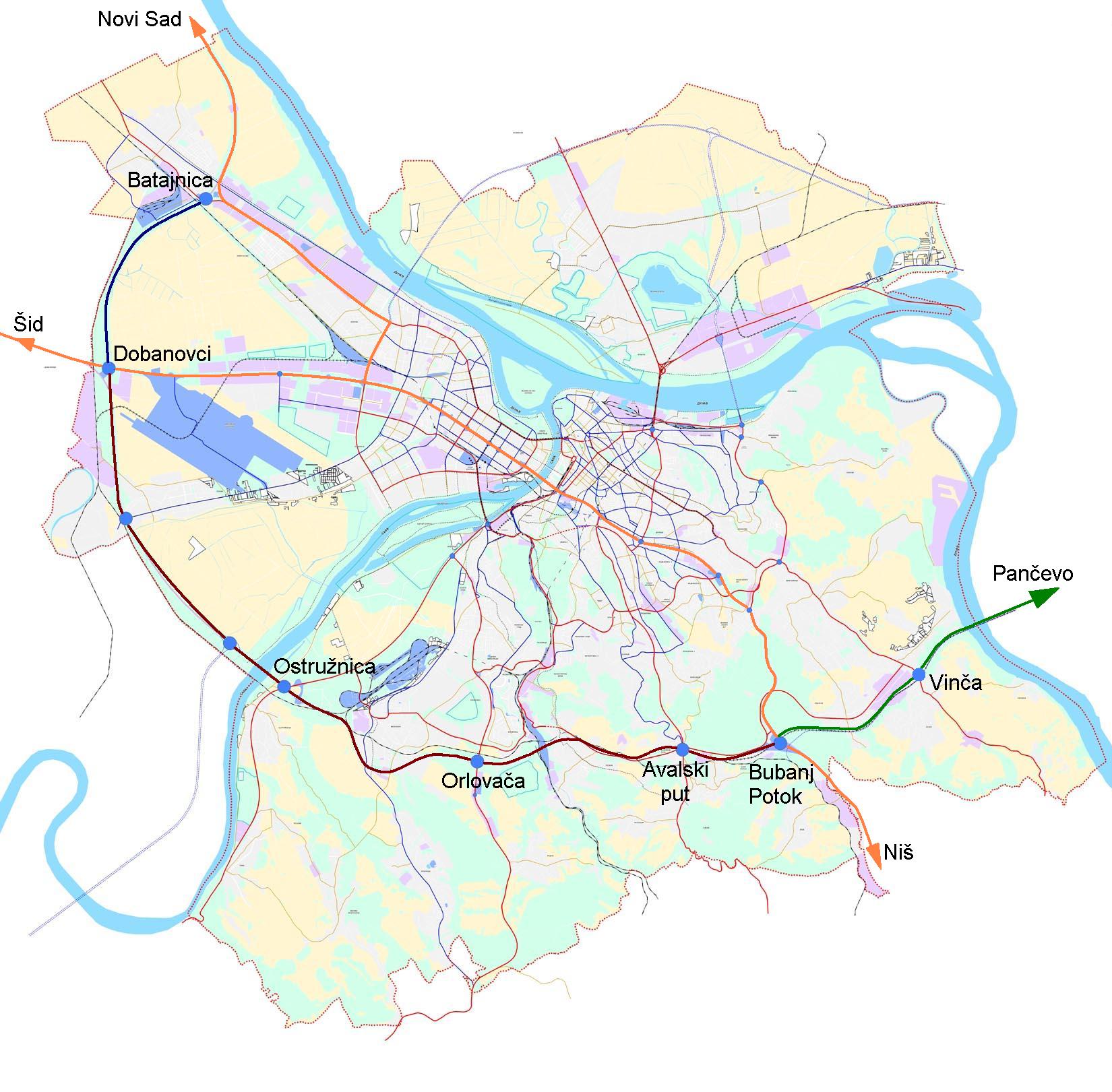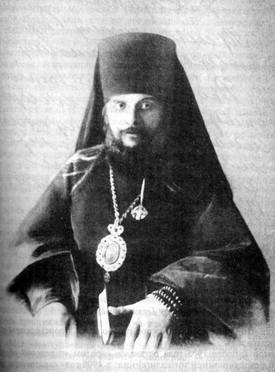|
Orlovača
Orlovača ( Serbian Cyrillic: Орловача) is one of major cemeteries in Belgrade, the capital of Serbia. It is located in the Belgrade's municipality of Čukarica. Location Orlovača cemetery is located in the eastern part of the Orlovača field, on the southern tip of the Belgrade's urban proper, alongside the Ibar highway, on the border of Čukarica and Rakovica municipalities. It is bounded by the creeks of Krušik on the south and Krušički Potok on the north, while the valley of the Kijevski Potok is to the east. It is situated between the neighborhoods of Železnik (northwest) and Petlovo Brdo (northeast). The field itself stretches to Železnik and is bordered by the Rnjakovac Creek on the south. It is bounded by the fields of Mastirine on the north, Logorište on the southwest, Drenjak on the south and Prekoplandište on the southeast. Just north of the cemetery are the railway and a crossroad of the Ibar Highway and Kružni Put, semi-circular road connecting the ... [...More Info...] [...Related Items...] OR: [Wikipedia] [Google] [Baidu] |
Belgrade Bypass
The Belgrade bypass ( sr, Обилазница око Београда, Obilaznica oko Beograda) or Belgrade city road bypass is a U-shaped, 69-km long motorway partially encircling the city of Belgrade, the capital of Serbia. Some 9.6 km of the bypass is the section of A1 motorway (currently under construction), and the rest is planned eastern extension of A3. The construction of the bypass started in 1990 and its parts have been sporadically built ever since. Its completion is expected to help alleviate Belgrade's traffic congestion, and remove all transit traffic from the city itself. Route ;Sector A (Batajnica - Dobanovci, A3 interchange) Sector A is 11.1 km long part of A1 motorway that intersects with A3 motorway at Dobanovci interchange. It is completed and opened to traffic in 2012. ;Sector B (Dobanovci, A3 interchange – Bubanj Potok) Sector B is 37.2 km long part of A1 motorway that intersects with A2 motorway at Surčin interchange. It is currently ... [...More Info...] [...Related Items...] OR: [Wikipedia] [Google] [Baidu] |
Ibar Highway
State Road 22, commonly known as Ibar Highway ( sr, Ибарска магистрала, Ibarska magistrala), is an IB-class road, connecting Belgrade with Šumadija and Western Serbia and finally with Montenegro at Špiljani border crossing. It starts with Orlovača interchange in Belgrade's municipality of Čukarica and is going through several major municipalities such as Ljig, Gornji Milanovac, Preljina (town in the municipality of Čačak), Kraljevo and Novi Pazar. In the southern section, highway goes in parallel to the upper course of the river Ibar, hence the name. Before the new road categorization regulation given in 2013, the route wore the following names: M 22 and M 2 (before 2012) / A2, A4, 15 and 32 (after 2012). The road is a part of the following European routes: E65 and E80 ( Bregovi – Mehov Krš), E761 (Preljina – Kraljevo) and E763 (Belgrade – Preljina). Motorway alternative In order to provide the safer and faster traffic link of Belgrade with ... [...More Info...] [...Related Items...] OR: [Wikipedia] [Google] [Baidu] |
Čukarica
Čukarica ( sr-cyr, Чукарица, ) is a municipality of the city of Belgrade. Name Like several other neighborhoods of Belgrade, Čukarica was named after kafana. At the present location of the Sugar Refinery, there was a kafana in the second half of the 19th century. It was very popular as it was located at the point where two roads, one from Obrenovac and other from Šumadija, meet at the entrance to Belgrade. It was owned by Stojko Čukar and after him the kafana was named “Čukareva kafana” which later gave name to the settlement. History The village of Čukarica asked to be transferred to the Belgrade municipality in 1906, but the plea was rejected. It was transferred from the Vračar ''Srez'' under the administration of the Belgrade municipality on 8 July 1907. Municipality of Čukarica was established for the first time on 30 December 1911. After a popular referendum, inhabitants of Čukarica voted to split from the municipality of Žarkovo and as a result were giv ... [...More Info...] [...Related Items...] OR: [Wikipedia] [Google] [Baidu] |
Petlovo Brdo
Petlovo Brdo or colloquially among the local population Pevac ( sr-cyr, Петлово Брдо or Певац) is an urban neighborhood of Belgrade, the capital of Serbia. It is located in Belgrade's municipality of Rakovica. Location Petlovo Brdo is located in the central part of the municipality, on the eastern slopes of the 205 meters high hill of the same name (meaning "Rooster Hill"). The neighborhood developed on the crossing of two major suburban roads of Belgrade, Ibar Highway and ''Kružni put''. It is bordered by the neighborhoods of Labudovo Brdo on the north and Kijevo on the east, while west and south from the neighborhood are still not urbanized. Further to the west is the neighborhood of Železnik, while further to the south the cemetery of Orlovača, both in the municipality of Čukarica. Characteristics The name of the hill appeared after 1950. By 2010, total forested area in the neighborhood covered With the expansion of the population of jackals in t ... [...More Info...] [...Related Items...] OR: [Wikipedia] [Google] [Baidu] |
Serbian Language
Serbian (, ) is the standardized variety of the Serbo-Croatian language mainly used by Serbs. It is the official and national language of Serbia, one of the three official languages of Bosnia and Herzegovina and co-official in Montenegro and Kosovo. It is a recognized minority language in Croatia, North Macedonia, Romania, Hungary, Slovakia, and the Czech Republic. Standard Serbian is based on the most widespread dialect of Serbo-Croatian, Shtokavian (more specifically on the dialects of Šumadija-Vojvodina and Eastern Herzegovina), which is also the basis of standard Croatian, Bosnian, and Montenegrin varieties and therefore the Declaration on the Common Language of Croats, Bosniaks, Serbs, and Montenegrins was issued in 2017. The other dialect spoken by Serbs is Torlakian in southeastern Serbia, which is transitional to Macedonian and Bulgarian. Serbian is practically the only European standard language whose speakers are fully functionally digraphic, using both Cyril ... [...More Info...] [...Related Items...] OR: [Wikipedia] [Google] [Baidu] |
Serial (literature)
In literature, a serial is a printing or publishing format by which a single larger work Work may refer to: * Work (human activity), intentional activity people perform to support themselves, others, or the community ** Manual labour, physical work done by humans ** House work, housework, or homemaking ** Working animal, an animal t ..., often a work of narrative fiction, is published in smaller, sequential instalments. The instalments are also known as ''numbers'', ''parts'' or ''fascicles'', and may be released either as separate publications or within sequential issues of a periodical publication, such as a magazine or newspaper. Serialisation can also begin with a single short story that is subsequently turned into a series. Historically, such series have been published in periodicals. Popular short-story series are often published together in book form as collections. Early history The growth of moveable type in the 17th century prompted episodic and often disconnec ... [...More Info...] [...Related Items...] OR: [Wikipedia] [Google] [Baidu] |
Cemeteries In Belgrade
A cemetery, burial ground, gravesite or graveyard is a place where the remains of dead people are buried or otherwise interred. The word ''cemetery'' (from Greek , "sleeping place") implies that the land is specifically designated as a burial ground and originally applied to the Roman catacombs. The term ''graveyard'' is often used interchangeably with cemetery, but a graveyard primarily refers to a burial ground within a churchyard. The intact or cremated remains of people may be interred in a grave, commonly referred to as burial, or in a tomb, an "above-ground grave" (resembling a sarcophagus), a mausoleum, columbarium, niche, or other edifice. In Western cultures, funeral ceremonies are often observed in cemeteries. These ceremonies or rites of passage differ according to cultural practices and religious beliefs. Modern cemeteries often include crematoria, and some grounds previously used for both, continue as crematoria as a principal use long after the interment areas ... [...More Info...] [...Related Items...] OR: [Wikipedia] [Google] [Baidu] |
Neighborhoods Of Belgrade
A neighbourhood (British English, Irish English, Australian English and Canadian English) or neighborhood (American English; see spelling differences) is a geographically localised community within a larger city, town, suburb or rural area, sometimes consisting of a single street and the buildings lining it. Neighbourhoods are often social communities with considerable face-to-face interaction among members. Researchers have not agreed on an exact definition, but the following may serve as a starting point: "Neighbourhood is generally defined spatially as a specific geographic area and functionally as a set of social networks. Neighbourhoods, then, are the spatial units in which face-to-face social interactions occur—the personal settings and situations where residents seek to realise common values, socialise youth, and maintain effective social control." Preindustrial cities In the words of the urban scholar Lewis Mumford, "Neighbourhoods, in some annoying, inchoate fashi ... [...More Info...] [...Related Items...] OR: [Wikipedia] [Google] [Baidu] |
Interchange (road)
In the field of road transport, an interchange (American English) or a grade-separated junction (British English) is a road junction that uses grade separations to allow for the movement of traffic between two or more roadways or highways, using a system of interconnecting roadways to permit traffic on at least one of the routes to pass through the junction without interruption from crossing traffic streams. It differs from a standard intersection, where roads cross at grade. Interchanges are almost always used when at least one road is a controlled-access highway (freeway or motorway) or a limited-access divided highway (expressway), though they are sometimes used at junctions between surface streets. Terminology ''Note:'' The descriptions of interchanges apply to countries where vehicles drive on the right side of the road. For left-side driving, the layout of junctions is mirrored. Both North American (NA) and British (UK) terminology is included. ; Freeway juncti ... [...More Info...] [...Related Items...] OR: [Wikipedia] [Google] [Baidu] |
Herzegovina
Herzegovina ( or ; sh-Latn-Cyrl, Hercegovina, separator=" / ", Херцеговина, ) is the southern and smaller of two main geographical region of Bosnia and Herzegovina, the other being Bosnia. It has never had strictly defined geographical or cultural-historical borders, nor has it ever been defined as an administrative whole in the geopolitical and economic subdivision of Bosnia and Herzegovina. Bosnia, the larger of the two regions, lies to the north of Herzegovina; the Croatian region of Dalmatia lies to the southwest; the Montenegrin region of Old Herzegovina lies to the southeast. The land area of Herzegovina is around , or around 23–24% of the country. The largest city is Mostar, in the center of the region. Other large settlements include Trebinje, Široki Brijeg, Ljubuški, Čapljina, Konjic and Posušje. Etymology The name (or ''Herzegovina'' in English) stems from German (the German term for a duke; sh, vojvoda), and means a land ruled and/or owned ... [...More Info...] [...Related Items...] OR: [Wikipedia] [Google] [Baidu] |
Iconostasis
In Eastern Christianity, an iconostasis ( gr, εἰκονοστάσιον) is a wall of icons and religious paintings, separating the nave from the sanctuary in a Church (building), church. ''Iconostasis'' also refers to a portable icon stand that can be placed anywhere within a church. The iconostasis evolved from the Byzantine architecture, Byzantine templon, a process complete by the 15th century. A direct comparison for the function of the main iconostasis can be made to the layout of the great Temple in Jerusalem. That Temple was designed with three parts. The holiest and inner-most portion was that where the Ark of the Covenant was kept. This portion, the Holy of Holies, was separated from the second larger part of the building's interior by a curtain, the "parochet, veil of the temple". Only the High Priest (Judaism), High Priest was allowed to enter the Holy of Holies. The third part was the entrance court. This architectural tradition for the two main parts can be seen ... [...More Info...] [...Related Items...] OR: [Wikipedia] [Google] [Baidu] |
Hieromartyr
In the Eastern Orthodox tradition, a hieromartyr is a martyr (one who dies for his beliefs) who was a bishop or priest. Analogously, a monk who is a priest is known as a hieromonk. See also *New Martyr The title of New Martyr or Neomartyr ( el, νεο-, ''neo''-, the prefix for "new"; and μάρτυς, ''martys'', "witness") is conferred in some denominations of Christianity to distinguish more recent martyrs and confessors from the old martyr ... References Webster: Hieromartyr Eastern Orthodox clergy Eastern Orthodox martyrs Types of saints {{Eastern-Orthodoxy-stub ... [...More Info...] [...Related Items...] OR: [Wikipedia] [Google] [Baidu] |




